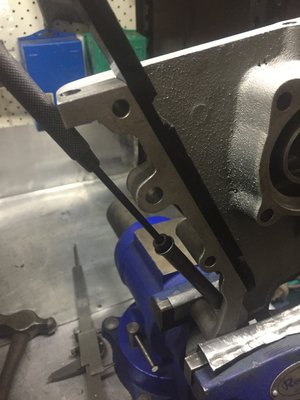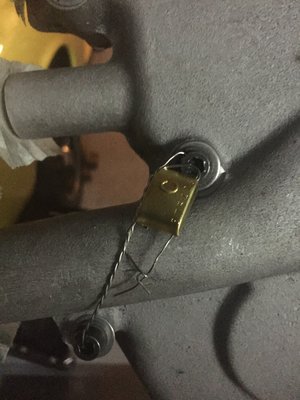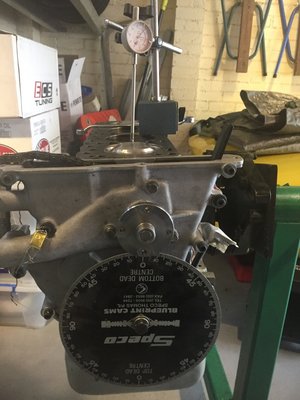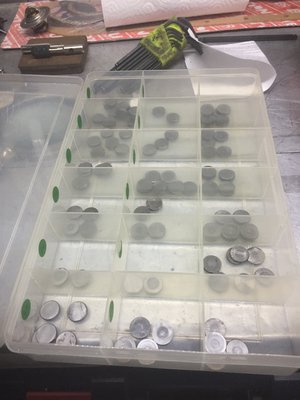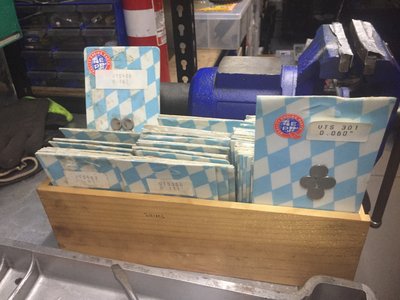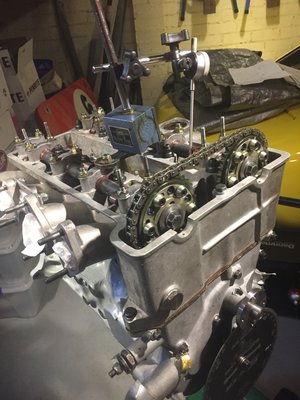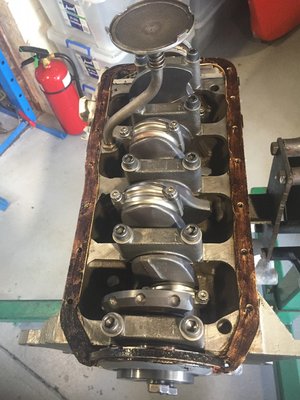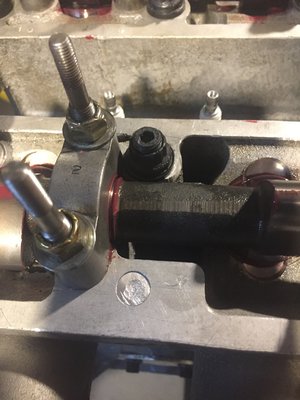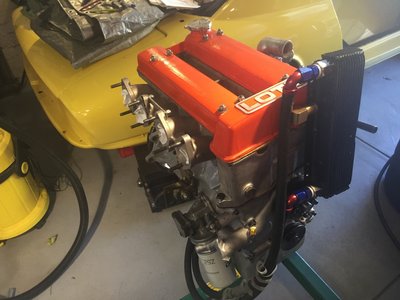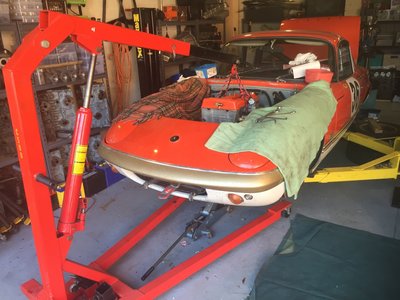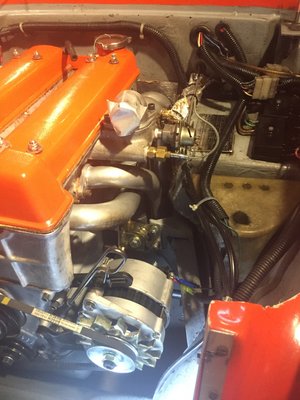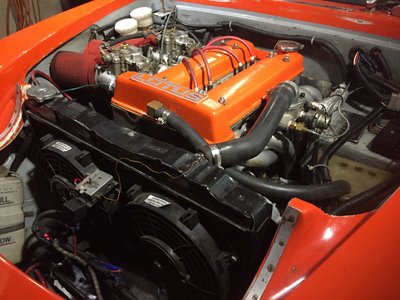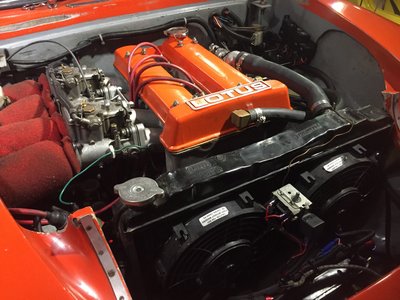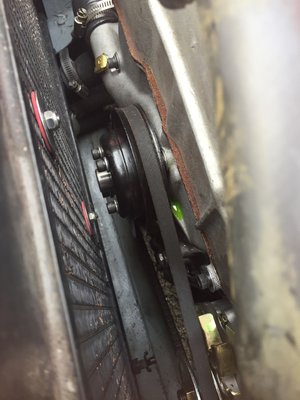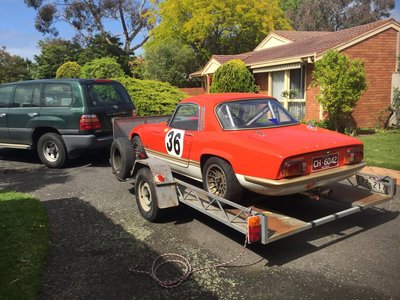Finally I have a chance to finish this thread so picking up where i left off.....
With the crank, pistons and rods and jack shaft in place, the new front cover assembly was finished with the dip stick tube driven into place using a socket head bolt in the top. The water pump assemble and the timing chain tension side pad fitted
The front cover was fitted and them bore and stroke was measured and bolts securing the front cover sealed by the category eligibility officer.
Timing disk is set on the crank for accurate measurement of crank position when timing cams and the TDC mark on the crank pulley also checked
Cams were shimmed before the head was installed but they tend to close up a thou or two when the head is bolted down. I try to allow for this by setting them at the top end of the target range off the head but I found that about half needed adjustment to get into the middle of the range once the head was bolted down. It helps to have a good stock of shims especially when accurate machining of the head results in needing 4 shims on the inlet that are all the same thickness !
I decided to give adjustable cam sprockets a go with this engine. Previously I had used offset dowels and standard sprockets. The adjustable sprockets made it easier and quicker. Dial gauge with an extension is needed to reach down past the cam lobe to measure the bucket MOP
I dont fit the sump until the head is done to minimise any problems if I drop anything down the timing chain cover while fitting the cams. I use Loctite No 3 aviation gasket sealer on all the cork and paper gaskets in the engine.
cheers
Rohan
